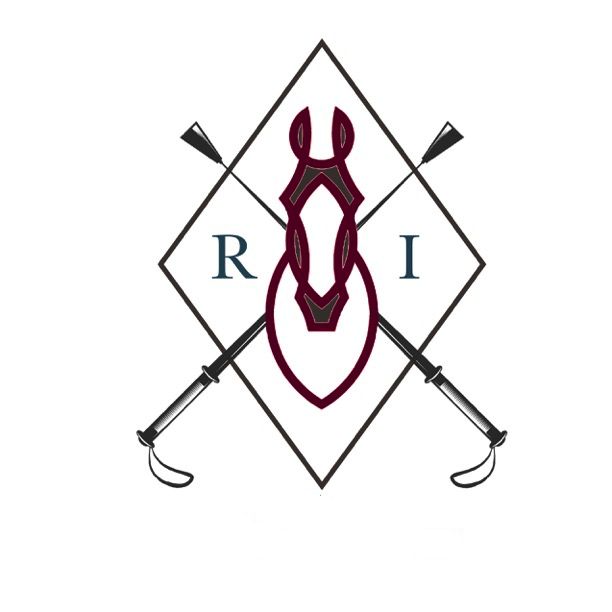Performance & Safety
For the Rider
All sports and many arts teach “position” or form because good form results in better performance. How you hold the golf club and position your feet affects how you hit the golf ball. The way you hold your dance frame influences the elegance of dance. How you hold your head and arms when you run can increase your time.
We teach riding “position” or form to develop a frame of muscle and balance memory as a reference point for the rider’s body.
The goal for a beginner’s position is to put their body inline and in balance on a still or moving animal. We want our rider’s bodies to memorize this position. This way, in times of stress or emergency, the muscle memory brings the body into line so the rider may recover the balance or control they’ve lost.
William Steinkraus, the first American to win an individual Olympic Gold Medal in equestrian, was often considered the most classic American rider. I love what he says in his book, Riding and Jumping. (pg. 27) “Though the rider’s position is clearly a means to an end rather than an end in itself, the means are so intimately involved with the results that every rider must reconcile himself to checking his riding position all of his life.”
For the Horse
We teach a balanced position in order to minimize the considerable stress the horse has in carrying a rider. This stress increases as he performs movements and activities the rider requires. (Next time you go to the barn, give an extra carrot to the lesson horses who suffer the unbalanced beginner.)
Be Careful of the “Position” Flip Side
I have great admiration for riders who adopt the equitation position and also ride challenging tests and courses well. Equitation riders are hard workers dedicated to detail. We judge part of an equitation ride on whether the rider’s position matches an ideal. This requires a rider to have the best build and weight to suit the required position and limits the many riders of different shapes. The pressures of equitation have created unnecessary problems, including health and emotional issues, for young people who strive to excel. Being just one section of show ring riding, equitation is a small, though important, segment of horsemanship.
The Purpose For “Position”
A good riding position helps the awkward rider to ride well and the talented rider to utilize his best ability. The classical framework benefits everyone, but there are many body types. Within the body types there are limitations of human conformation. An instructor must adapt his view of the perfect position to insure the best possible posture for each rider within the framework of good balance.
That means not all riders can put their heels down the same. However, all able-bodied riders can learn to change their weight distribution from top heavy to bottom and leg heavy. Not all riders will have their toes nearly parallel to the horse’s sides, nor should they. Not all riders will have their toes precisely under their knees. I’m not suggesting we teach the chair seat, just that some riders have bigger feet.
As instructors, we should know the purpose behind the position we teach. Within reason, each building block of a good riding position must adjust to suit the rider’s body type. Only then will you develop riders who have natural positions that are functioning in balance with their horse.
An Independent Seat & Feel
Balance seat is universal, no matter your discipline. The goal is for the rider to develop their own balance in harmony with the horse’s balance. The horse’s balance changes in large and small ways. A rider has developed an independent seat when, without thinking, their balance adjusts to the horse without disrupting their hands or their legs. They can then use hands and legs without disrupting their balance or seat.
At this point feel becomes an instinctive part of riding. The earliest stages of helping a student develop these instincts is to first help them find their balance through the rudiments of correct position. The rider will only reach their true balance through your instruction when you teach the correct position for their particular body type.
Your Turn
Do you have a favorite method or exercise for teaching position? Lots of sitting trot? Riding without stirrups? Lunging? Please share your thoughts with us in the comments.
Thanks for joining me today at TheRidingInstructor.net
Barbara Ellin Fox
Copyright 2021

Barbara,
I LOVE this post!!!
My first exercise with any new student, no matter if they have never ridden before, or have, is to talk about, and then do a little demo, how diaphragmatic helps their balance when riding. New students are started on the lunge-line so they can work on their balance and not have to worry about getting their mount to go, guide them to where they need to go, or stop. Students that come saying they have riding experience are given an evaluation ride on the lunge-line.
May I share this post with my students?
Hi Kathy,
You’ve got some excellent methods for starting new riders. There is so much for the student to worry about on the first few rides. If you add the concern with the unknown, the desire to do well, and the new surroundings, it can be a huge load that creates tension. With diaphragmatic breathing it’s almost impossible to hold much tension in the shoulders. As soon as the tension is released and the breathing goes deep the rider’s center of gravity seems to lower and the seat deepens in the saddle.
Yes! Of course you can share this post.
Thanks for your helpful comment.
Barbara, Thank you. I agree with what you say 🙂
Thank you for allowing me to share this post with my students.
You’re welcome, Kathy. Thanks for sharing it!